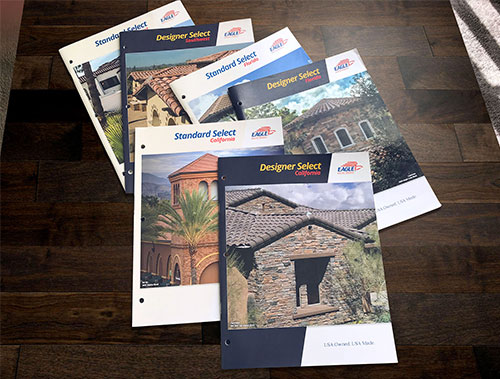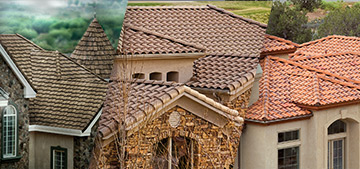If you are the owner of a beautiful concrete tile roof, you may notice a white, chalky residue on the surface of your tile. Don’t fear—this is a natural process called efflorescence, which is a chemical reaction that can occur in all cement products.
Meaning “to flower out” in French, efflorescence is essentially the migration of salt to the surface of a porous material. The free lime in manufactured cement in combination with water results in a series of chemical reactions. These reactions cause the release of calcium hydroxide, which mixes with carbon dioxide to form the crystalline deposit of water-soluble salts you may see on the surface of your concrete roof tiles. This can also appear as a softening of color, known as a bloom, in concentrated white patches.
While a temporarily altered look can occur, rest assured that this is normal. Read on as we debunk three myths about efflorescence.
Myth #1: Efflorescence harms your roof
This chalky deposit is superficial and in no way affects the quality, functionality, or structural integrity of your concrete tile roof. Its resistance to the elements of fire, rain, snow, hail, high wind, scorching heat and cold freezes, as well as its energy efficiency, will remain unchanged. Additionally, your warranty provided by Eagle Roofing Products is not affected in any way.
Myth #2: Efflorescence is toxic
Often confused with mold, this residue is nontoxic and poses no direct health concern. This crystalline deposit of water-soluble salts is composed of alkali earth sulfates and carbonates which are found in most cement-based materials.
Myth #3: Efflorescence does not go away
Over time, efflorescence does disappear. The combination of rain and sunlight will eventually wash the salts from the tiles in question. While it is difficult to predict how long it will last, as it depends on the amount of deposit and local weather conditions, a significant reduction typically occurs within a year after it appears. Simply allow the reaction to run its course; in most cases it will leave the original color of the roof intact without efflorescence occurring again.
Fear not, as this is a temporary natural occurrence that does not cause damage to your concrete tile roof. While you can opt to have your roofscape cleaned or resealed by an experienced, trained professional, the best solution is to allow the process of efflorescing to finish to avoid trapping any remaining salts under the sealer.
If you have any questions or concerns regarding your concrete tile roof, please contact your local Eagle Account Representative, or refer to the Tile Roofing Industry Alliance’s technical brief on efflorescence.



